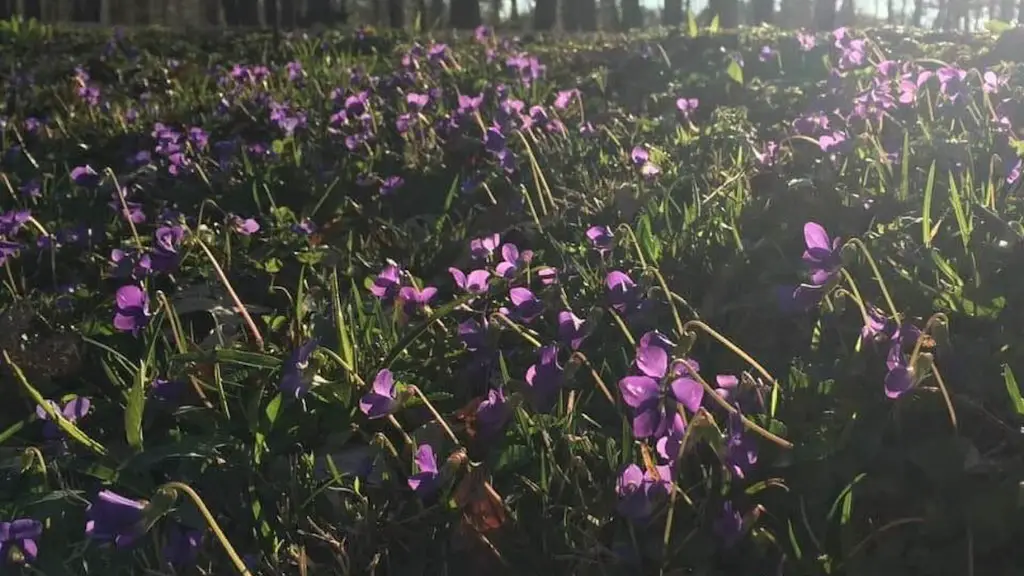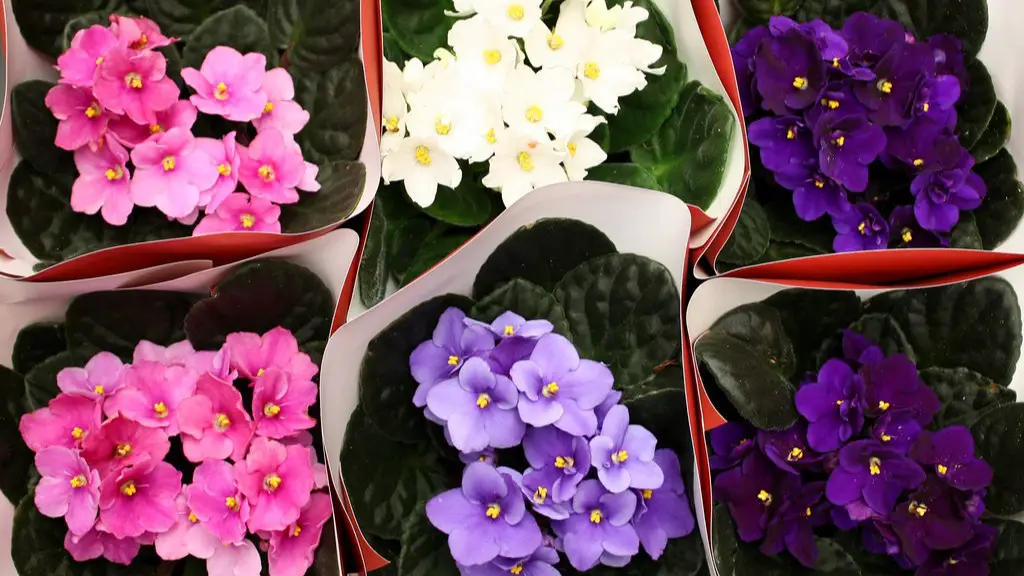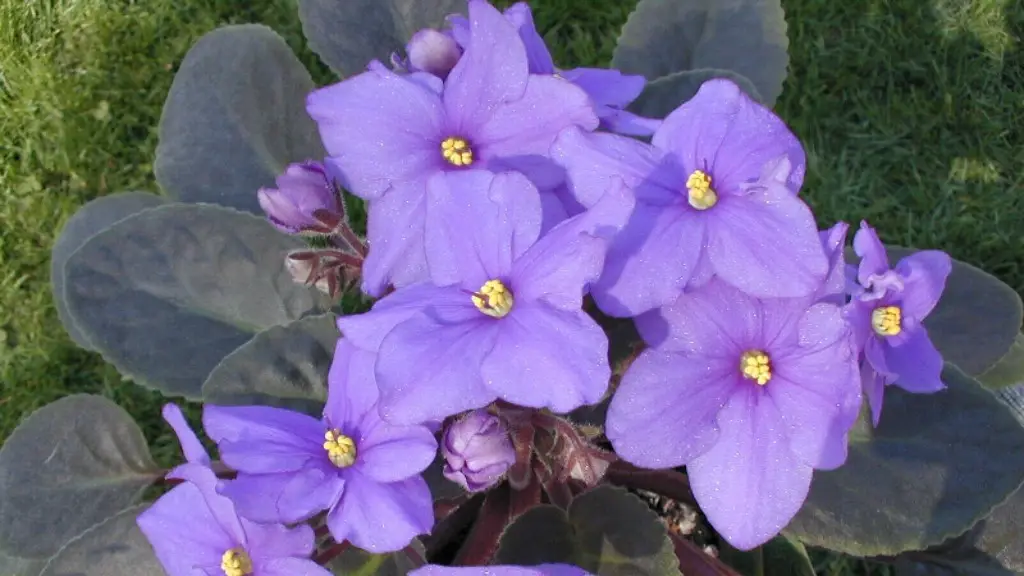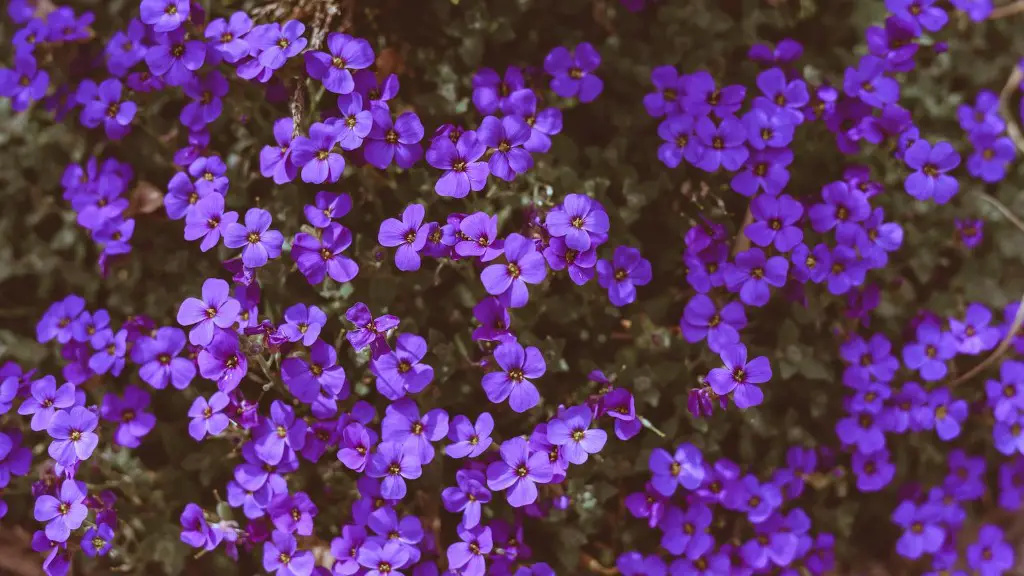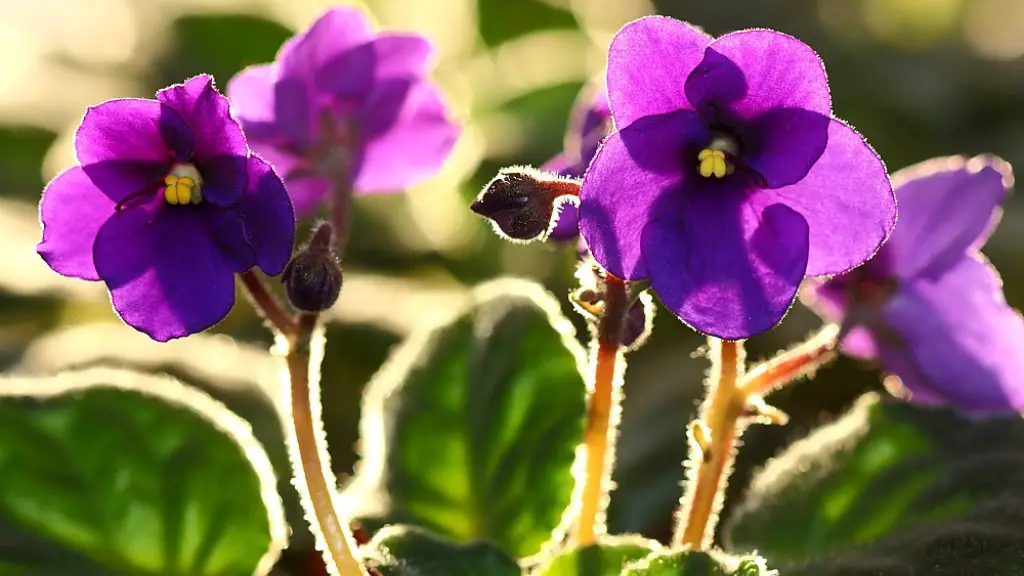African violets are a popular houseplant because they are relatively easy to care for and Bloom frequently. They are also relatively easy to propagate from cuttings, which is a process where a piece of the plant is cut off and then rooted in soil to grow a new plant. This is a great way to create new plants for yourself or to give as gifts to friends.
To start African violets from cuttings, use a sharp knife or scissors to carefully remove a leaf with a bit of stem attached from a healthy parent plant. Cut off the bottom inch (2.5 cm) of the stem at an angle, just below a leaf node (where the leaf meets the stem). Place the cutting in a glass or jar of lukewarm water, making sure that the leaves are above the water line. Put the container in a spot out of direct sunlight and wait for the cutting to form roots, which usually takes two to four weeks. Once the roots are about an inch (2.5 cm) long, pot the cutting in a small pot filled with potting soil designed for African violets. water it well and keep the soil moist but not soggy. Place the pot in a spot with filtered sunlight and wait for the plant to grow and bloom.
Can you root an African violet in water?
The traditional way of propagating violet leaves is to place the stem into water until roots begin to grow. Using this method, select a healthy leaf and remove it from the plant by toggling it from side to side until it pulls free.
If you are planning on growing your African violet from a cutting, you can expect it to take around 3-4 weeks for the cutting to form new roots. Once the roots have begun to form, you will start to see new leaves beginning to grow. Once there are 2-3 new leaves growing, it will be time to repot the plant. The entire process from start to finish can take anywhere from 2-6 months.
How do you start a new African violet plant
African violets are a type of flowering plant that is native to Africa. They are known for their beautiful flowers and their ability to thrive in a variety of climates. In order to propagate African violets, there are a few steps that need to be followed.
Step 1: Prepare Your Rooting Medium
The first step is to prepare your rooting medium. This can be done by using a mixture of peat moss and sand. The ratio of peat moss to sand should be 2:1. Once the mixture is prepared, it should be moistened with water.
Step 2: Add Water
After the rooting medium has been prepared, water needs to be added. The amount of water that is added will depend on the size of the pot that is being used. A general rule of thumb is to add enough water so that the rooting medium is moist, but not soggy.
Step 3: Fill Your Pots
Once the rooting medium has been prepared and the water has been added, it is time to fill your pots. African violets can be propagated in a variety of pot sizes. However, it is important to choose a pot that has drainage holes in the bottom.
Step 4: Choose
If you’re looking to grow African violets from leaf cuttings, the first step is to trim the stem down to about 1-15 inches (25-38 cm). You may also want to dip the tip of the stem into some rooting hormone for best results.
Once the cutting is prepped, simply place it in a one-inch deep (25 cm) hole in potting soil. Press the soil firmly around it and water thoroughly with tepid water. With a little patience, your African violet should soon begin to grow!
What is the best way to root African violets?
To root leaf cuttings, fill a pot with a moistened 50:50 mix of vermiculite and coarse sand. Insert the petiole of each leaf cutting into the rooting medium at a 45 degree angle. Firm the rooting medium around the petiole of each leaf cutting. After all cuttings are inserted, water the rooting medium and allow it to drain for a few minutes.
Coffee grounds are slightly acidic and contain nitrogen, which helps plants grow healthy foliage. Occasionally sprinkling used coffee grounds on top of your African violet potting soil can be good for the plant.
Is it better to root African violets in water or soil?
To root African violets in water, simply take a leaf from your existing plant (or a friend’s) and place it in a cup of water. Change the water every few days, and within a few weeks, you should see roots growing!
African violet leaf propagation in water is a great way to get larger, healthier plants. The leaves will take longer to start roots, but the plants will be much better off in the long run.
Can you root an African violet from a stem
African violets are a popular house plant because they are relatively easy to propagate. To propagate African violets vegetatively, simply take a leaf with an intact petiole (leaf stem) and place it in a rooting medium. African violet leaf cuttings can successfully produce roots in water or soil. Once the roots have developed, the African violet can be transplanted into a pot of soil.
Epsom salts are a great way to give your plants the essential magnesium and sulfur that they need to produce beautiful blooms and healthy foliage. Simply mix 1 1/2 teaspoons of Epsom salts in a quart of tepid water and swirl to dissolve. Then water your African violets with this solution once a month.
Do you need rooting hormone for African violets?
African violet cuttings can take some time to grow roots without rooting hormone, but this can be countered by dipping each cutting into rooting hormone. Rooting hormone is also a sort of fail-safe if you take care of your cuttings well.
Misting the foliage of your African Violet can cause permanent leaf spotting. Use room-temperature water instead, making sure to keep the crown (the section of the plant at soil level) from becoming saturated. This will help prevent crown rot, which can be a serious problem for these plants.
How do African violets multiply
African violets and begonias can be propagated by leaf cuttings. The leaf cutting should include a bit of the stem attached to the leaf. The leaf (with stem) is then inserted into the rooting medium. New plants will form at the base of the leaf stem and along the cut edge of the leaf.
The best soil for African violets is well-drained and slightly acidic. Miracle-Gro® Indoor Potting Mix is specially formulated to provide indoor plants like African violets with just the right growing environment. This potting mix provides the perfect balance of water retention and drainage, and its slightly acidic pH is ideal for African violets.
How fast do African violets grow?
It is estimated that young violet plants will appear in 8 to 10 weeks, and be ready for transplanting in three months. When potting newly rooted cuttings, gardeners are advised not to add fertilizer, as it may overload the delicate new roots and lead to problems with the plant’s development. Once the violet is established in its new pot, however, it will benefit from a regular fertilizing schedule.
African violets are a beautiful and relatively easy plant to propagate. There are three main ways to propagate them: by leaf cuttings in water, by leaf cuttings in soil, and by removing a pup from the stalk and rooting it. All three methods are relatively simple and only require a little patience. With a little care, you’ll be able to propagate a healthy new African violet in no time!
Conclusion
To start an African violet from a cutting, you will need a sharp knife or pruning shears, a clean pot with fresh potting soil, and a warm, sunny windowsill. Cut a healthy leaf from the mother plant, making sure to include a bit of stem. Cut off the bottom inch of the stem at an angle, and then plant the cutting in the potting soil. Water well and keep the soil moist, but not soggy. In a few weeks, you should see new growth.
The best way to start African violets from cutting is to take a well-rooted plant and remove a leaf with some stem attached. Strip the leaves from the bottom half of the stem, dip the cut end into rooting hormone, and place the stem in moist perlite or sand. Within a few weeks, you should see new growth appear.
